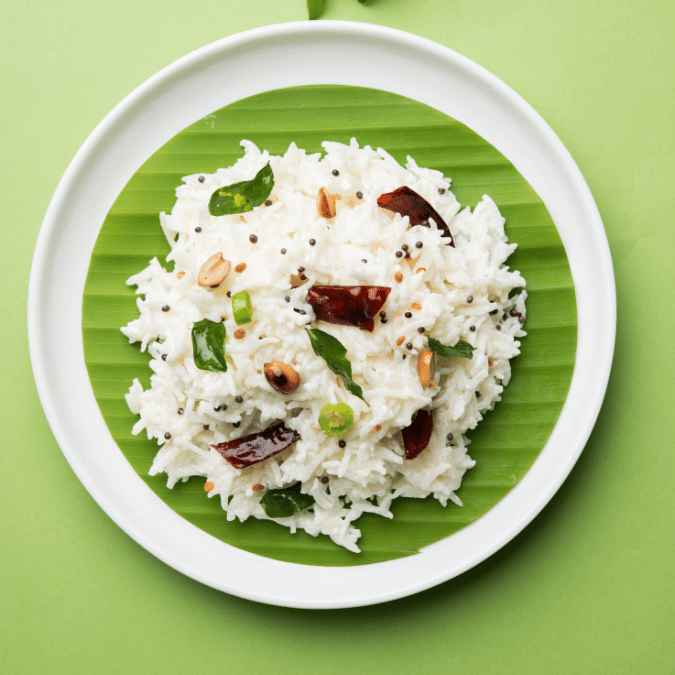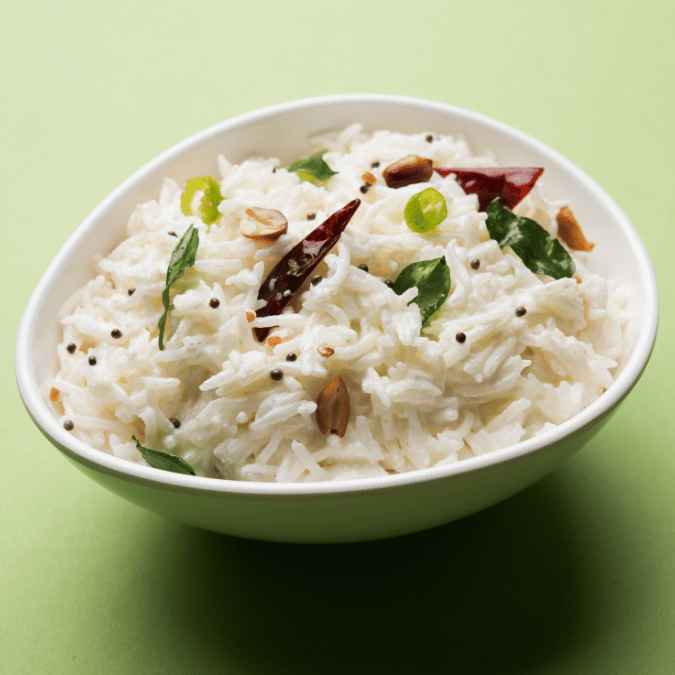What is Basmati Rice
Basmati rice is unique among it’s peers because of its distinctive aroma, flavor and versatility. We will examine this collection’s rich heritage as well as its unique qualities and why it’s become a popular staple in the kitchen in this complete guide.
Basmati Rice is the Key to unlock its Essentiality
Basmati rice is a fragrant long-grain variety that is renowned for its exquisite scent and delicate taste and name derived from the Sanskrit term Vasmati (fragrant). The scent that comes from a pot of Basmati cooking is amazing!
Origins and History
To appreciate fully Basmati rice, it’s vital to appreciate its past. The unique variation has roots that go back to its earliest cultivated in the foothills of Himalayas for centuries; India along with Pakistan both have distinct varieties of Basmati varieties to be consumed. Let’s explore what makes Basmati apart Let’s dive deeper into what makes Basmati rice.
1.The aroma: This rice stands out from other varieties due to its incredibly aromatic scent because of the 2-acetyl-1-pyrroline compound found in the rice. These distinctive molecules also provide jasmine rice with its distinctive aroma, hence the name”The King of Rice!
2.The length of the grain: This rice grain is wide and long, making the perfect ingredient for dishes in which texture is important, such as pilafs, biryanis, and stir-fries.
3. Flavor: Basmati’s delicately sweet and slightly nutty taste is the perfect complement to many different cuisines instead of overwhelming their distinct flavors. In contrast to other types, Basmati actually amplifies rather than overpowers them.
Perfect Basmati Rice Cooking Techniques
The process of cooking Basmati rice with perfection can be a skill and we’ve put together a step-by-step guide to achieving the fluffy and delicious grains each time:
Wash Your Rice Start by washing your rice in cold water until the extra starch is gone and you can ensure that the grains remain separated while cooking. This will ensure the highest quality outcomes and is the most secure when it’s time to store it or consume it.
Soak Rice in water for about 30 minutes prior to the start of cooking is essential in order for the rice grains to absorb water equally, which will result in more consistent outcomes in cooking.
Reach the Perfect Proportions for the cup worth of This rice, make use of 1.5 cups of water for the base of your recipe. It can be enhanced further by adding other spices like a small pinch of salt or a few drops of oil, if desired.
Cook: Once the water has come up to the point of boiling, lower to a simmer Cover the pot, and let it simmer for about 15 minutes prior to testing for doneness by tasting the grain and a fork to fluffing it until the grain is cooked.
Basmati Rice Varieties
Although Basmati rice can be described as a class in its own right It is worth noting that there are many varieties in the Basmati family each with their distinctive features. The most popular Basmati rice varieties are:
1. Traditional Basmati: This is the traditional kind of Basmati rice, renowned for its unique scent and its slender grains. It is a staple ingredient in many popular traditional Indian and Pakistani food items.
2. Pusa Basmati: Pusa Basmati is a hybrid variety that has been that was developed by agricultural research. It has the traditional Basmati flavor and length, but is usually sold with a lower cost.
3. 1121 Basmati: 1121 Basmati well-known for its long grains that sometimes reach upwards of 8.4 milli meters. It is prized for its unique flavor and aroma, and is frequently utilized in recipes that are high-end.
4. Super Basmati: Super Basmati is a different kind of aromatic rice, which is cultivated mostly in Pakistan. It is a favorite for its aroma and its elongation.
5. Dehradun Basmati: Dehradun Basmati rice comes from the lower reaches in the Himalayas and is well-known for its delicate taste and appealing aroma.
There is no direct answer to this question, as there is no one-size-fits-all. The amount of brown rice you should consume depends on multiple aspects, such as age, activity level, and overall health. Although, on average, adults should try to consume 3-5 servings per week. Besides, if you want to increase your intake, it’s best to start eating brown rice instead of white rice. You can further add it to stews and soups for an extra enhancement of nutritional value.
There is no direct answer to this question, as there is no one-size-fits-all. The amount of brown rice you should consume depends on multiple aspects, such as age, activity level, and overall health. Although, on average, adults should try to consume 3-5 servings per week. Besides, if you want to increase your intake, it’s best to start eating brown rice instead of white rice. You can further add it to stews and soups for an extra enhancement of nutritional value.
Cooking tips and Tricks
To fully be a master of the craft at cooking Basmati rice Here are some more tips and tips:
1. Flavored Rice: Try the addition of whole spices such as cinnamon, cardamom and cloves to your cooking water to create a unique flavor for simple this rice.
2. Vegetable Pulao: Prepare an amazing vegetable pulao recipe by sautéing spices and vegetables in a pan, and then mixing in This rice as well as water. This is a one-pot recipe that’s delicious and healthy.
3. Fried Rice: Turn the remaining That rice to a delicious Fried Rice dish by an addition of favourite proteins and vegetables.
4. Saffron Rice: To add an extra touch of luxury, mix your rice in saffron threads, soaked into warm milk. This produces a stunning golden hue, and also a delicate scent of saffron.
5. Hyderabadi Biryani: If looking for something new, take a look at the well-known Hyderabadi biryani. this is covered with marinated meat, and aromatic spices before slow-cooked until it is cooked to perfection.
Basmati Rice as well as Sustainability
In recent times there has been rising awareness of the importance of sustainable agriculture as well as the effects of rice cultivation on the natural environment. The traditional Basmati agriculture has frequently been seen as a more sustainable alternative to other varieties of rice. Here’s why:
1. Low water consumption: This rice typically requires less water to cultivate compared to the shorter-grain varieties of rice. This can be particularly important in areas that are prone to water shortage.
2. Low Chemical Use: Many This rice farmers adopt organic farming methods or practices that are low in chemicals and are reducing usage of pesticides as well as fertilizers.
3. Biodiversity Traditional rice farming is often a source of biodiversity by keeping a variety of livestock and crops along with the cultivation of rice.
Final: Basmati Rice - A Heritage of Flavor and Fragrance
In the end, This rice is not simply a staple in many households, it’s also an exquisite culinary delight that adds delicious flavors, aromas and a wide range of options into the kitchen. Its roots are within the Himalayan foothills and its delicate scent and distinctive cooking characteristics are what make it an ideal ingredient in dishes that range from traditional to modern.
If you’re planning an intimate meal for the family or a special celebration meal or exploring the international cuisines, This rice invites you to taste the essence of the ancient traditions and delicious flavors of the natural world. It’s a tribute to the beauty of agriculture and the pleasure of food exploration.
So, the next time you sit down to savor the taste of Basmati rice Take an instant to take in the extraordinary journey of this grain from into the fields that lie in the Himalayas to your table. this rice isn’t just a food item it’s a celebration tradition, taste and scent it transcends all borders, and connects food lovers across the globe.
How to Choose the Best Basmati Rice
Be aware when you are shopping for Basmati rice for these traits:
Aroma: To experience the true aroma of Basmati rice Take the time to breathe in its aroma This will be an assurance that its quality hasn’t been harmed.
Grain Length: Slim and long grains indicate high quality Basmati rice.
Quality: Carefully examine the rice packaging for any broken or impurities grains that may contaminate the purity of your rice.
Reputation and Brand Reputation: When buying this rice varieties which have earned their spot in the ranks of trusted producers and brands, the quality should always be top of the list.






Pingback: How to Find the Best Basmati Rice 2024? - Vi Exports
Pingback: Why is Basmati Rice Expensive? | Expensive Basmati Rice